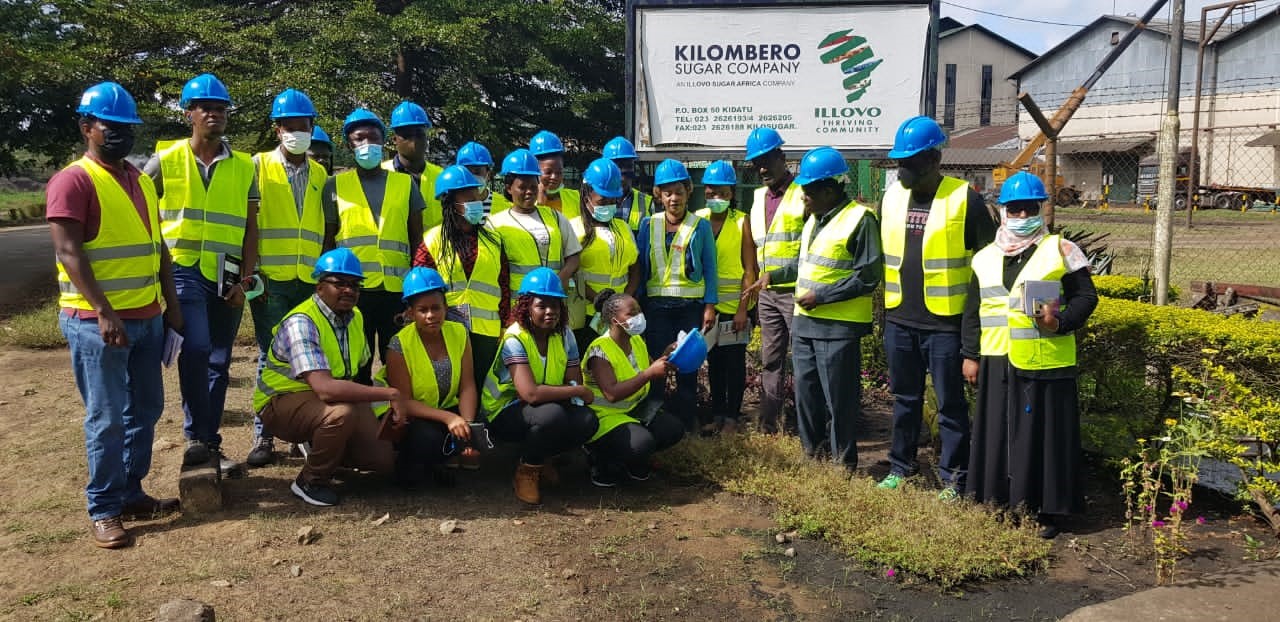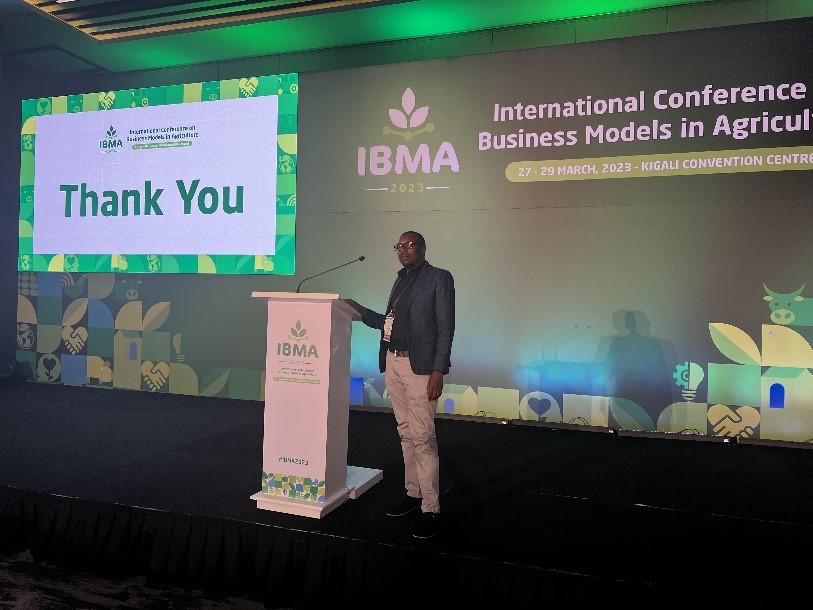By Alberto António Manhiça (REG. NO. FSC/D/2020/0020)
Ph.D. student under REFOREST Programme at Sokoine University of Agriculture
INTRODUCTION
Nowadays, conventional wood preservatives are under restrictions worldwide due to their detrimental effect on human health and the environment. Increasing concerns exist about using oil-based preservatives (e.g. creosote) and waterborne-based (e.g. Chromated Copper Arsenate – CCA). Using extractives as a natural wood preservative is encouraged and attractive in the industry. Sawdust from durable hardwood species can be extracted using organic solvents and impregnated into the wood structure of less durable wood species. As part of my PhD research, I am conducting several research activities related to removing extractives from sawdust of durable hardwood species collected in local sawmills in Mozambique and formulating in different concentrations to impregnate into less durable hardwood species. Relevant experiments such as decay and field tests are being performed to evaluate the efficacy of extractives in protecting the wood.
The research work started in Sweden, and I simultaneously participated in a Wood Science and Technology course. I also benefited from the training on how to perform experiments in the lab on the topic. Currently, I am conducting research activities associated with extraction, formulation of preservatives based on extractives, impregnation of non-durable samples and performing diverse experiments such as screening tests and chemical characterisation of obtained extractives.
Thanks to a three months scholarship to study at the Swedish University of Agricultural Sciences (SLU) in Uppsala, I enhanced my understanding of basic concepts of wood chemistry. I also benefited from training to build capacity in performing experiments in wood science and technology. The goal was to conduct activities on developing new environmentally friendly formulations for wood protection based on extractives from wood processing mills waste in Mozambique. During the three months, the following research activities were carried out:
Chemical extraction from sawdust collected locally in Mozambique.
Sawdust of durable hardwood species was collected in local sawmills in Mozambique. The sample was oven-dried and extracted through soxhlet equipment using organic solvents, a mixture of toluene, acetone and ethanol, following in proportions of 2:1:1. Then these solvents were evaporated and recovered using a rotary evaporator. As a result, the extractives were obtained in solid form and quantified.
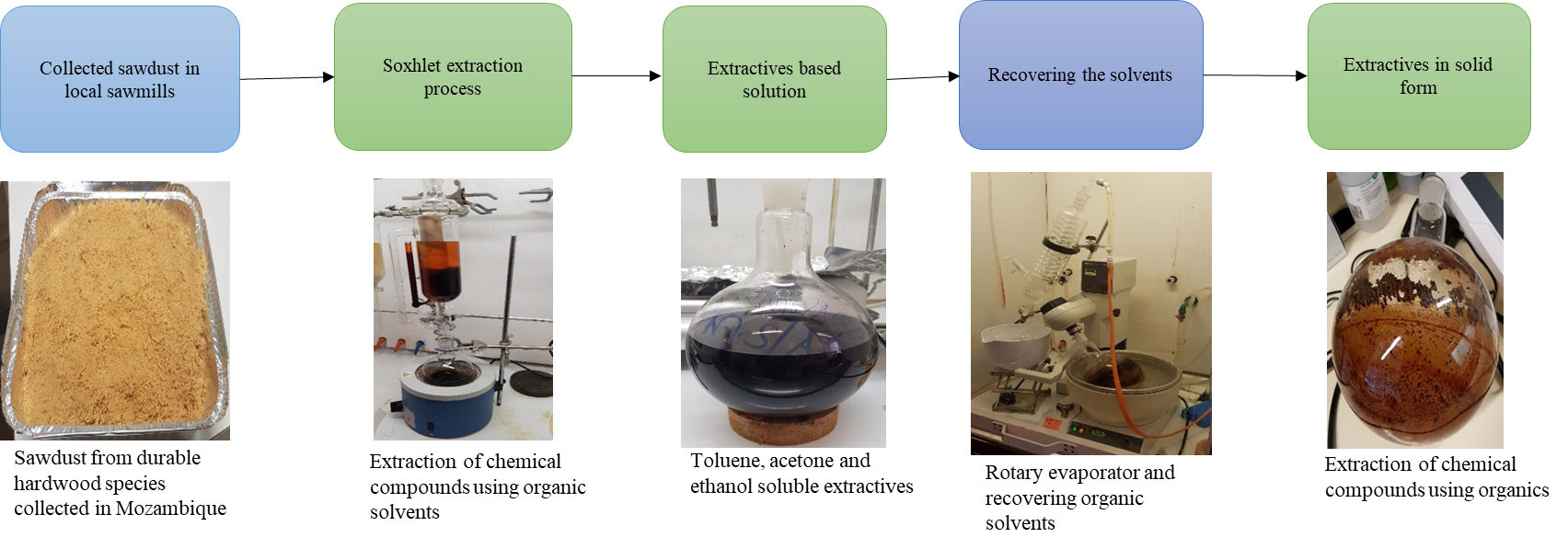
Formulation of preservatives based on extractives and impregnation samples of non-durable wood species.
The extracted wood preservative was formulated in different concentrations (2%; 4%; 7%; 10%). Then, the non-durable hardwood samples were impregnated for the screening test, where treated samples were exposed to Postia P., the most aggressive fungus. Because of interest in time, I could not assess the mass loss during my stay in Sweden.
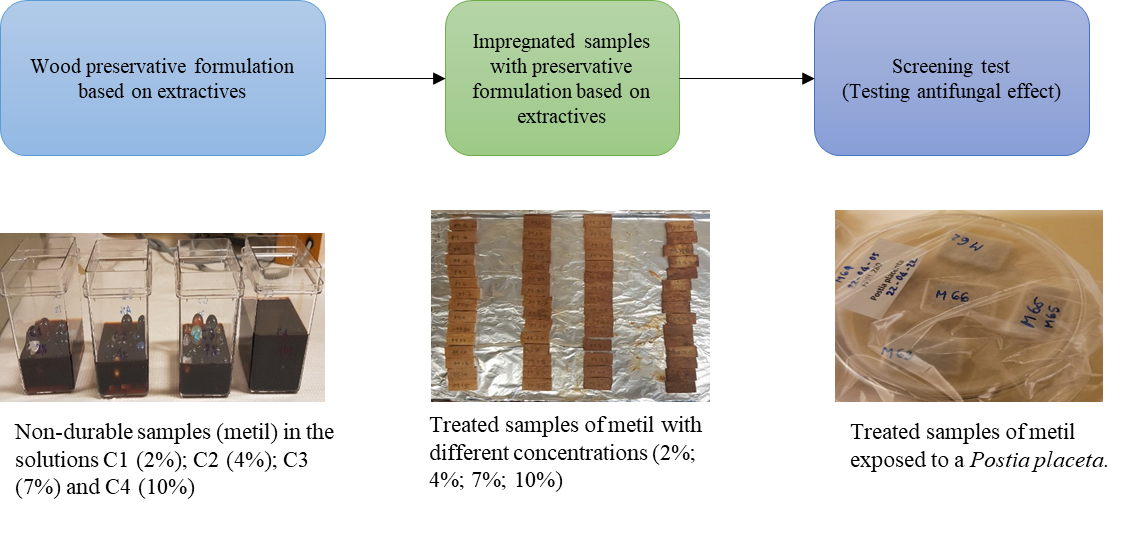
RESEARCH ACTIVITIES IN MOZAMBIQUE
Fieldwork activity
Fieldwork for wood sample collection was carried out from the 24th of July to the 2nd of August 2022 in the LevasFlor Forest concession. The forest concession is located in the Cheringoma district, Sofala province, in the centre of Mozambique (Figure 1). The climate at the sampling site is characterised as subtropical, with cool and dry winters lasting from April to September and hot and rainy summers from October to March. Levasflor is a company accredited by the government for industrial activity in the wood sector. The company exploits forest resources sustainably based on FSC standards. The Forest concession area occupies about 49,000 ha and lies within the Miombo forest.
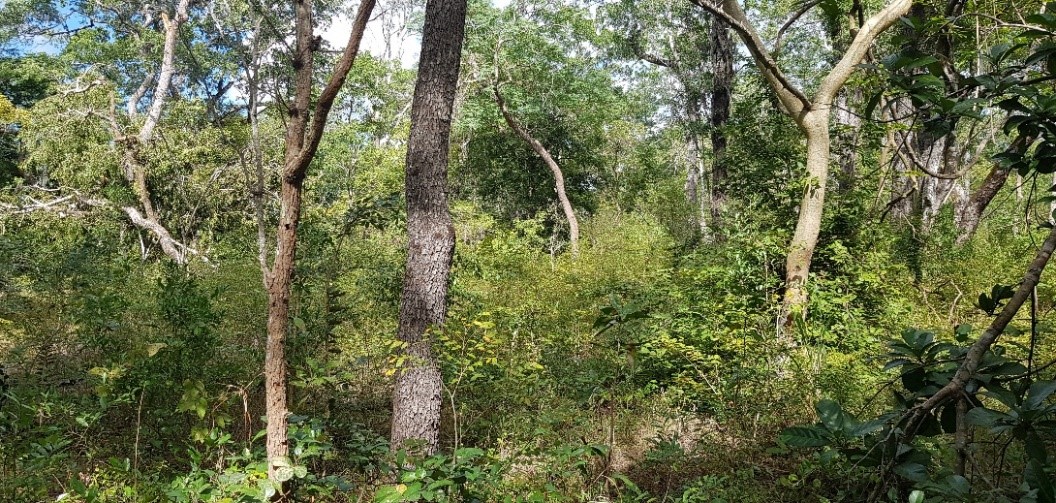
Figure 1: LevasFlor Forest concession where the fieldwork took place
Five trees of two lesser-used and non-durable wood species were obtained from forest concession. The less durable wood species collected are Brachystegia spiciformis and Julbernadia globiflora. The tree selection was randomly conducted based on Dbh, stem straightness, and healthy appearance.
The wood sample collection was carried out following five steps which include:
- Selecting and cutting down the trees and logging
- Transporting the logs from the forest to the local sawmill
- Sawing into planks
- Transporting the planks LevasFlor company to the Wood science laboratory at Eduardo Mondlane University (UEM)
- Storing the planks under the shelter for pre-drying
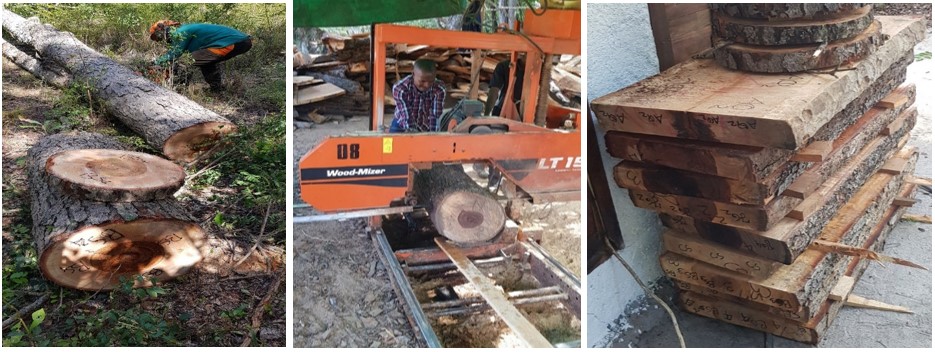
Figure 2: a) cutting the tree and logging; b) sawing into 7 cm x 100 cm; c) Processed planks ready for transportation to the lab.
Trees of each hardwood species were selected randomly from the forest (preferably not too many trees next to each other). The logs were locally processed into 7 cm x 100 cm planks and shipped to the Wood science laboratory at UEM in Maputo. The planks were air-dried to a moisture content of 20% or less in an airy pile using stickers (dry sticks) between the pieces. The samples were sheltered from direct sunlight and rain during the drying period.
Research activities in the laboratory
Currently, I am undertaking research activities in the laboratory at Eduardo Mondlane University regarding removing extractives from sawdust of durable hardwood species through soxhlet apparatus using organic solvents.

From obtained extractives, I am performing the growth inhibition assay experiment where a solution of extractives is mixed with sterilised malt-agar to yield a final concentration range of 0.125 mg/mL, 0.25 mg/mL, 0.5 mg/mL, 1.25 mg/mL and 2.5 mg/mL. Then, Petri dishes are inoculated in their centre with a small portion of a malt agar freshly grown Coniophora Puteana, Lentinus lapideu, Postia placenta (brown rot fungi) and Trametes versicolor (white rot fungus) colony. After that, the Petri dishes are kept in an incubator. Therefore, every day, the diameter of the fungus growth measurements in Petri dishes are taken.
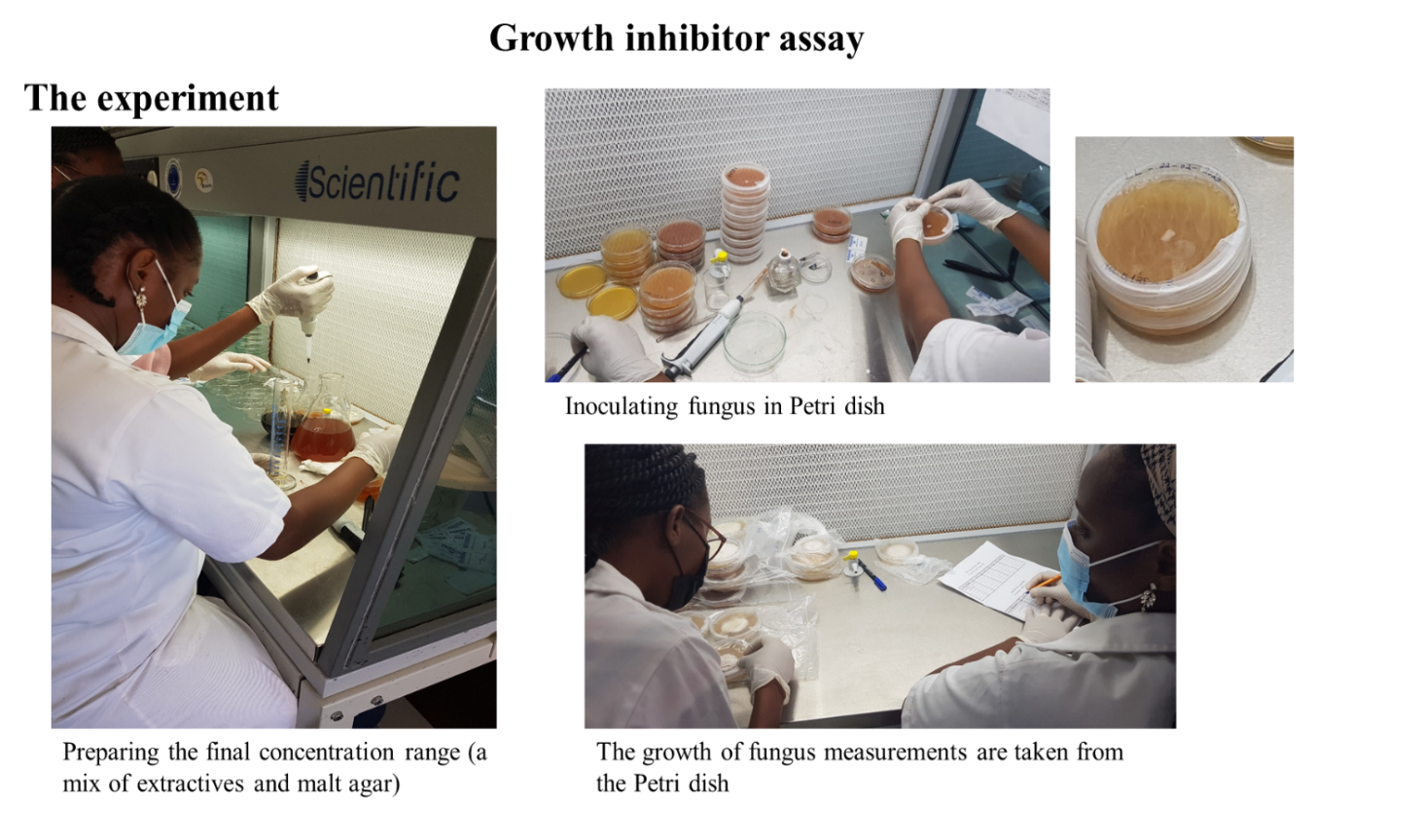
Preliminary results show that the growth inhibitor of fungus increases with the extractives concentration.
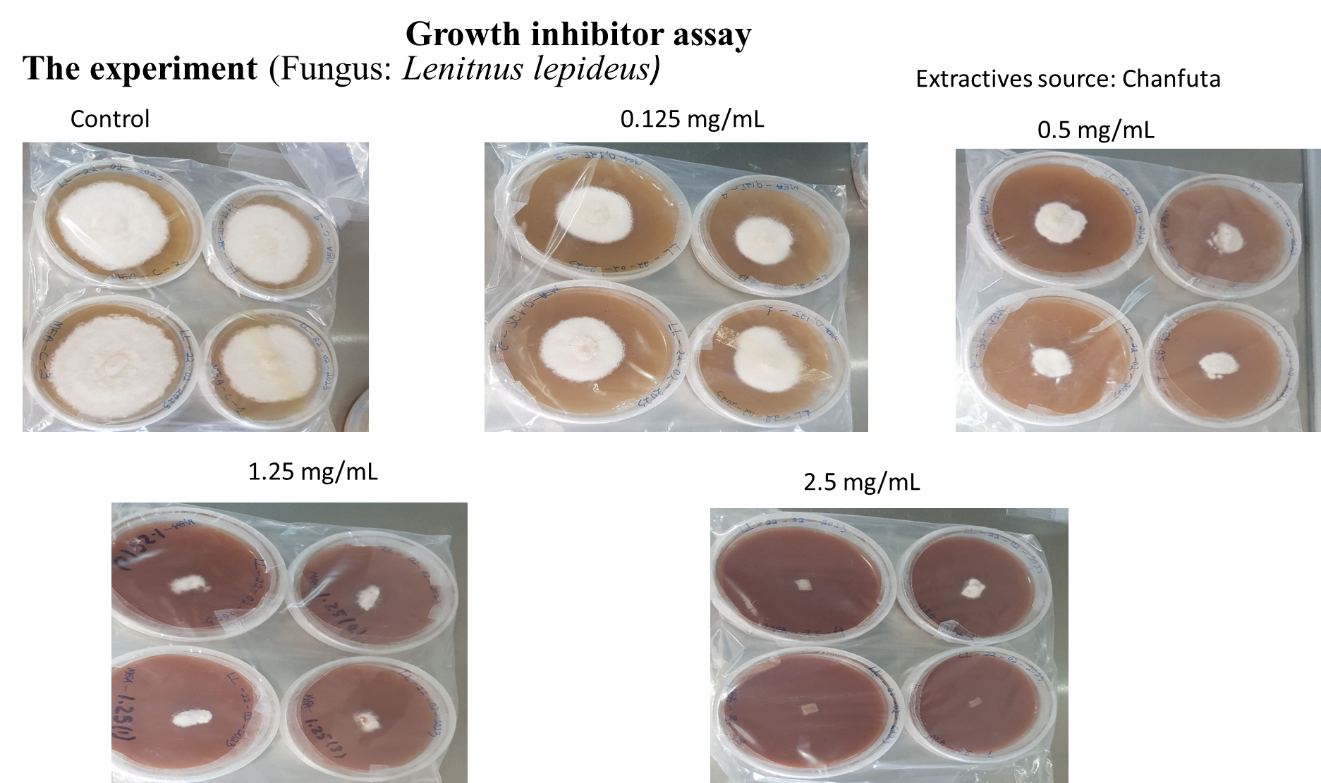
The next step is to formulate the preservative based on extractives in different concentrations and impregnated in less durable standardised wood samples of Brachystegia spiciformis and Julbernadia globiflora. Then, experiments regarding the efficacy of wood preservatives based on extractives will be performed, including decay tests in vitro and field tests.


